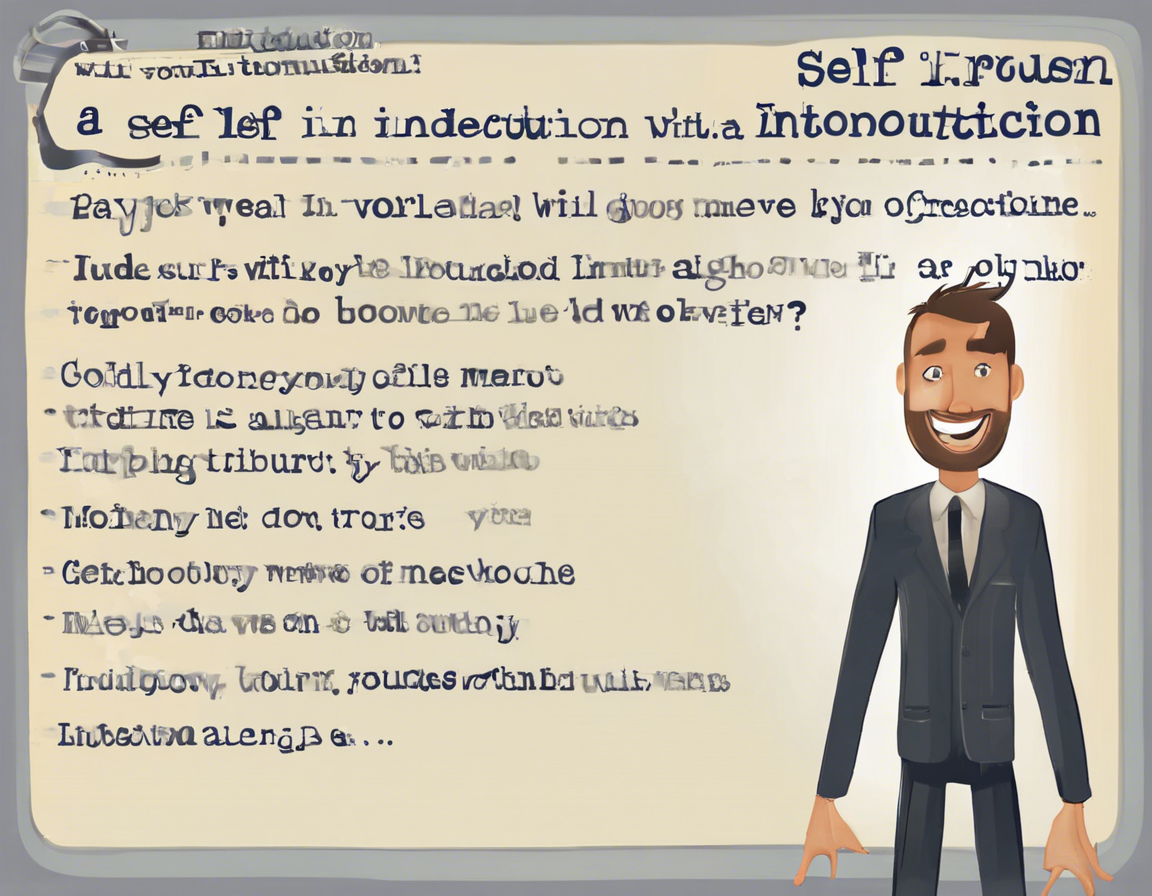Introducing oneself is a fundamental skill in social interactions, whether in professional or casual settings. Making a good first impression is crucial, and a well-crafted self-introduction can set the tone for positive connections and interactions. In this article, we will delve into the art of introducing oneself in English, providing tips, examples, and commonly asked questions to help you navigate various social situations with confidence and finesse.
Tips for Introducing Yourself in English
1. Be Concise and Engaging
When introducing yourself, aim to be brief yet descriptive. Highlight key aspects such as your name, background, and purpose for the introduction.
2. Maintain Eye Contact and Smile
Non-verbal cues play a significant role in communication. Maintain eye contact and smile to convey confidence and approachability.
3. Adapt to the Situation
Tailor your introduction based on the context. For a formal setting, maintain a professional tone, while in casual settings, you can inject a bit of personality and humor.
4. Practice Active Listening
Engage with the person you are introducing yourself to by actively listening to their responses. This shows respect and interest in the interaction.
5. Show Enthusiasm
Express enthusiasm when introducing yourself. Let your passion and energy shine through your words to create a memorable impact.
6. Use Open-Ended Questions
Encourage further conversation by incorporating open-ended questions in your introduction. This helps in establishing a dialogue and building rapport.
Examples of Introducing Yourself in English
Example 1:
“Hello, my name is Sophie, and I recently graduated with a degree in Marketing from ABC University. I’m passionate about digital marketing and excited to explore opportunities in the field.”
Example 2:
“Hi there, I’m Alex. I have been working as a software engineer for 5 years and specialize in front-end development. I enjoy coding and solving complex problems.”
Example 3:
“Hey, I’m Sam, a travel enthusiast and photographer. I love exploring new places and capturing moments through my lens. Nice to meet you!”
Example 4:
“Good afternoon, I’m Dr. Patel, a pediatrician with 10 years of experience in caring for children’s health. I’m dedicated to providing compassionate healthcare to young patients.”
Frequently Asked Questions (FAQs) About Introducing Yourself in English
1. How do I start an introduction in a professional setting?
In a professional setting, start with your name and job title. For example, “Hello, I’m Emily, the new marketing manager at XYZ Company.”
2. Should I include personal interests in my introduction?
It’s optional to include personal interests, especially in more casual settings. They can help to showcase your personality and common ground with others.
3. How do I introduce myself in a group setting?
In a group setting, make eye contact with different individuals while introducing yourself briefly. You can also mention your connection to the group or the purpose of your presence.
4. Is it necessary to shake hands while introducing myself?
Shaking hands is a common form of greeting but may vary based on cultural norms or personal preferences. When in doubt, observe others’ behaviors and follow suit.
5. What should I do if I forget someone’s name during introductions?
If you forget someone’s name, it’s okay to politely ask for it again. You can say, “I’m sorry, could you please remind me of your name?” It shows that you value the interaction.
6. How can I make my introduction memorable?
To make your introduction memorable, try to incorporate a unique fact about yourself, share a short anecdote, or ask engaging questions to spark conversation and leave a lasting impression.
7. Is it necessary to rehearse my introduction beforehand?
While rehearsing your introduction can boost confidence, it’s essential to maintain a natural and authentic delivery. Practice key points but allow room for spontaneous interactions.
8. How do I end an introduction gracefully?
To end your introduction gracefully, you can express pleasure in meeting the person, offer a handshake (if appropriate), and express openness to further communication or collaboration.
9. What if I have a hard-to-pronounce name?
If you have a name that others may find challenging to pronounce, you can proactively provide a phonetic pronunciation or a brief explanation of its origin to ease communication.
10. Should I follow up after the introduction?
It’s a good practice to follow up after an introduction, especially in professional contexts. Sending a brief email or message expressing appreciation for the interaction can help maintain connections.
Mastering the art of introducing yourself in English involves a blend of confidence, clarity, and adaptability. By following these tips, examples, and addressing common questions, you can navigate various social scenarios with ease and leave a positive impression on those you meet. Remember, a well-crafted introduction is the first step towards building meaningful connections and establishing rapport in any environment.


